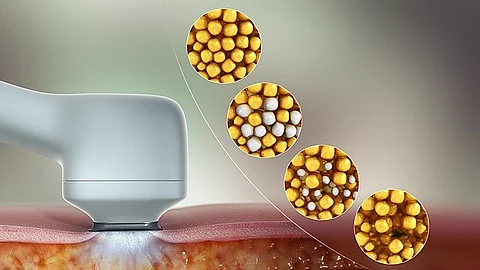A US-based lawyer is urging caution against the trendy fat-reduction treatment CoolSculpting, warning it can lead to a disfiguring side effect. Dr. Whitney Ray Di Bona (JD), the owner of Beauty Justice, claims the procedure has a “terrifying” risk of causing non-cancerous tumors made of hardened fat, often requiring surgery for correction on a podcast with Alex Clark.
What is CoolSculpting?
CoolSculpting, or cryolipolysis, is a fat-freezing treatment designed to reduce stubborn fat in targeted areas such as the stomach, arms, thighs, and chin. Approved by the FDA in 2010, this non-invasive method eliminates fat cells by inducing cold-induced apoptosis (fat cell death) without damaging the skin or surrounding tissues.
The concept of cryolipolysis originated from studies on frostbite, revealing that fat freezes at a higher temperature than skin. By leveraging this property, CoolSculpting devices lower the temperature of fat cells to destroy them while keeping other tissues intact.
How Does CoolSculpting Work?
CoolSculpting, also known as cryolipolysis, is a non-surgical fat-reduction treatment that uses targeted cooling to eliminate fat cells. During the procedure, the doctor applies a device to the desired area, such as the stomach, arms, thighs, or chin. The device holds the targeted body part between two cooling paddles that rapidly lower the temperature.
The process usually takes 35 to 60 minutes. Cold exposure destroys approximately 20-25% of the fat cells in the treated area without harming the surrounding skin or tissues.
After the procedure, the body’s immune system gradually eliminates the dead fat cells over time. While some patients notice changes within a few weeks, the final results typically become visible after several months.


